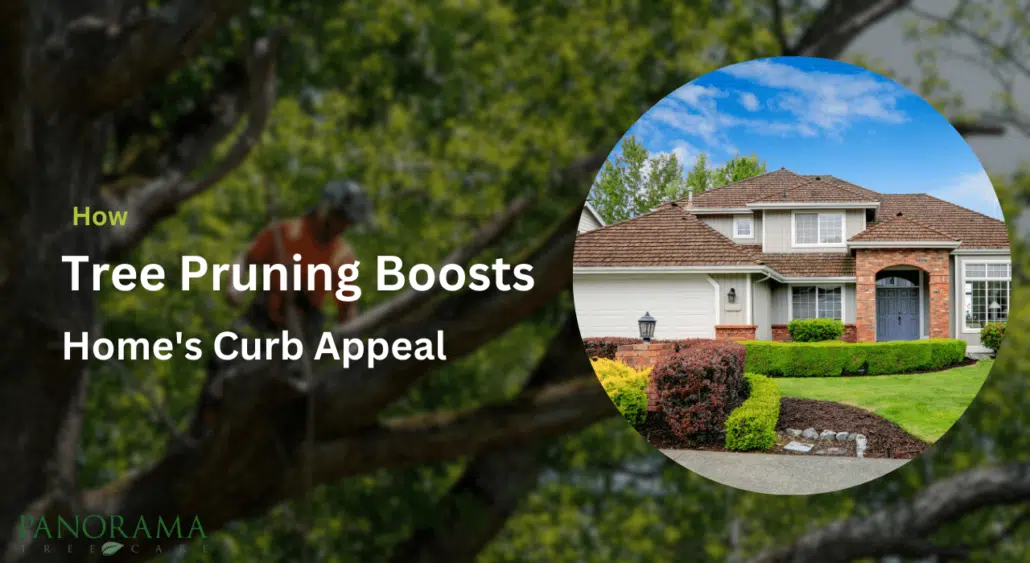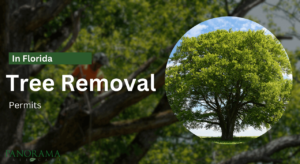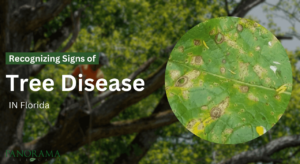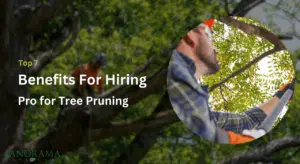As a homeowner, you understand the importance of curb appeal.
A well-maintained and visually appealing property not only enhances your personal enjoyment but also contributes to increasing your home’s value.
One often overlooked aspect of curb appeal is the role of trees.
Properly pruned trees can dramatically improve the overall aesthetic of your landscape, framing your home in a beautiful, natural setting.
In this article, we’ll explore how professional tree pruning can elevate your home’s curb appeal and provide expert tips to achieve stunning results.
Importance of Curb Appeal for Homeowners

First Impressions Matter
When you’re driving through a neighborhood or walking down the street, what draws your attention to a particular house?
It’s often the exterior appearance, including the landscaping and overall presentation.
Curb appeal is essentially the attractiveness of a property from the curb, and it sets the stage for the viewer’s perception of the entire home.
Boosting Property Value
Curb appeal plays a significant role in determining the value of a property. Homes with well-maintained exteriors tend to fetch higher prices in the real estate market.
Potential buyers are more likely to be attracted to a property that looks inviting and well cared for from the outside.
So, investing in curb appeal can yield significant returns when it comes time to sell your home.
Creating a Sense of Pride
A beautifully landscaped exterior doesn’t just impress others; it also brings a sense of satisfaction and pride to the homeowners themselves.
Coming home to a visually appealing property can lift your spirits and make you feel good about where you live.
It’s like having your own little piece of paradise right outside your door.
Reflecting Personal Style
Your home’s exterior is a reflection of your personal style and taste.
Whether you prefer a lush garden, a neat and tidy lawn, or a modern minimalist look, your landscaping choices can convey a lot about who you are as a homeowner.
Curb appeal allows you to express yourself and create a welcoming atmosphere that aligns with your aesthetic preferences.
How Well-Maintained Trees Contribute to a Property’s Overall Aesthetic
Natural Beauty and Elegance
Trees are nature’s masterpieces, and when properly maintained, they can elevate the beauty of any property.
Picture a row of gracefully arching branches, adorned with lush foliage swaying gently in the breeze.
Well-maintained trees add a touch of elegance and sophistication to your landscape, enhancing its overall appeal.
Framing Your Home
Trees act as natural frames that highlight the architectural features of your home.
Whether it’s a charming cottage nestled among towering oaks or a modern masterpiece framed by sleek, slender trees, the right foliage can accentuate the unique character of your property.
Providing Shade and Comfort
One of the most practical benefits of trees is their ability to provide shade, especially during hot summer months.
A canopy of healthy leaves not only shields your home from the harsh rays of the sun but also creates a cool, inviting retreat for outdoor activities.
Imagine lounging under the dappled shade of a majestic tree, enjoying a book or a leisurely picnic with loved ones.
Creating a Welcoming Atmosphere
Trees have a way of softening the edges of a property and creating a sense of warmth and hospitality.
They invite visitors to linger a little longer, offering a peaceful sanctuary away from the hustle and bustle of everyday life.
A well-tended landscape with thoughtfully placed trees can evoke feelings of tranquility and serenity, making your home a haven for both residents and guests.
Overview of Tree Pruning and Its Impact on Curb Appeal
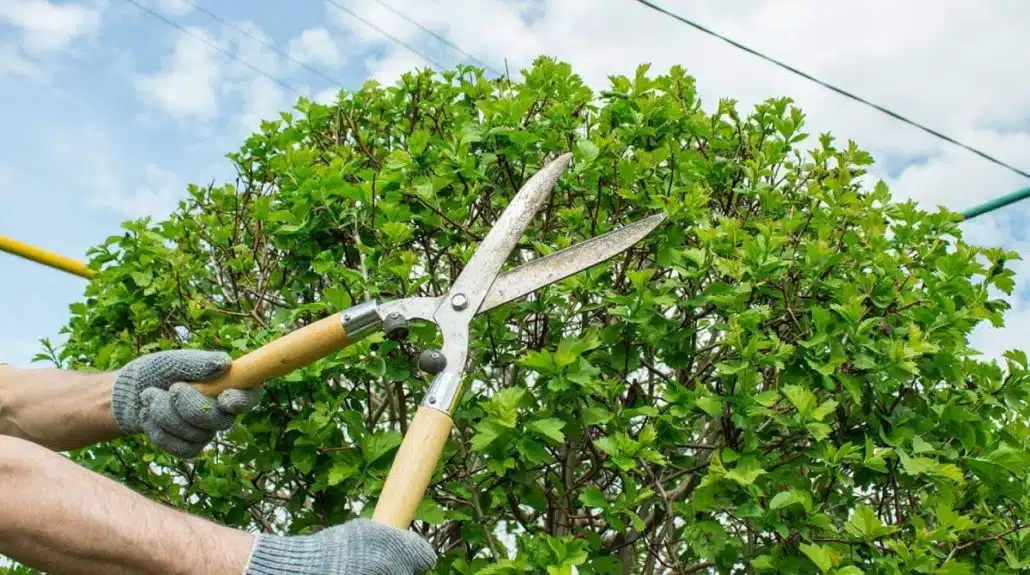
Importance of Strategic Pruning
Pruning isn’t just about randomly cutting branches; it’s a precise and strategic process that requires careful consideration.
Professional arborists assess the tree’s health, growth patterns, and aesthetic goals before making any cuts.
By strategically removing unwanted or unhealthy branches and shaping the canopy, they can enhance the tree’s natural beauty while promoting its long-term health and vitality.
Impact on Curb Appeal
Now, you might be wondering, how does tree pruning actually impact curb appeal?
Well, imagine your home with overgrown, unkempt trees blocking the view and casting shadows over your property.
It doesn’t exactly scream “welcome.” That’s where pruning comes in. By removing dead, diseased, or overgrown branches, pruning opens up the canopy, allowing more light to filter through and enhancing the overall appearance of your landscape.
Benefits of Professional Tree Pruning
While you could technically prune your trees yourself, there are significant benefits to hiring a professional arborist.
These experts have the knowledge, experience, and specialized tools to prune trees safely and effectively.
They can identify potential issues such as disease or structural weakness and take corrective action to ensure the health and stability of your trees.
Benefits of Professional Tree Pruning
Improved Tree Health and Longevity
Proper pruning is like a rejuvenating spa day for your trees. Just as regular haircuts promote healthy hair growth, pruning stimulates the growth of strong, vibrant trees.
By removing dead, diseased, or overcrowded branches, professional arborists enable trees to allocate nutrients more efficiently to the remaining parts, fostering robust growth and resilience.
This not only enhances the tree’s immediate health but also extends its lifespan, allowing it to thrive for years to come.
Enhanced Tree Structure and Shape
Imagine your trees as works of art, with each branch contributing to their unique form and character.
Professional tree pruning is akin to sculpting, shaping the tree to achieve a desired silhouette and structure.
By carefully trimming branches and thinning the canopy, arborists create a balanced and aesthetically pleasing appearance.
Moreover, maintaining proper structure reduces the risk of structural failure during storms or high winds, safeguarding both the tree and your property from potential damage.
Removal of Dead, Diseased, or Hazardous Branches
Deadwood isn’t just an eyesore; it’s a hotbed for pests and diseases that can wreak havoc on your trees.
Professional pruning eliminates these potential threats by selectively removing dead, diseased, or damaged branches.
By cutting out the compromised areas, arborists prevent pests and diseases from spreading to healthy parts of the tree, keeping it vibrant and pest-free.
This proactive approach to tree care promotes overall tree health and minimizes the need for costly interventions down the road.
Increased Sunlight Exposure and Air Circulation
Sunlight and fresh air are essential ingredients for a thriving landscape.
However, overgrown trees can cast dense shadows, inhibiting grass growth and depriving other plants of sunlight.
Professional pruning opens up the tree canopy, allowing more sunlight and air to filter through to the ground below.
This not only promotes healthy grass growth but also benefits other plants in your landscape, ensuring they receive the light and air they need to flourish.
Better Visibility and Clearance Around the Home
Have you ever found yourself squinting through dense foliage just to see the road when backing out of your driveway?
Professional pruning improves sightlines and enhances visibility around your property, making it easier to navigate safely.
By selectively removing branches that obstruct views or overhang walkways, arborists create clear paths and open spaces, reducing the risk of accidents and enhancing overall safety.
When to Prune Trees for Optimal Curb Appeal
Ideal Pruning Seasons for Different Tree Species
Tree species vary in their preferred pruning times, largely based on their dormancy and growth patterns. Understanding the ideal pruning season for your specific tree species is crucial for achieving the best results:
Late Winter or Early Spring: Many deciduous trees benefit from pruning during late winter or early spring, while they are still dormant. Pruning during this time promotes vigorous spring growth and minimizes stress on the tree.
Summer Pruning: Certain tree species, such as flowering trees or those prone to bleeding sap, may prefer summer pruning. This allows the tree to heal quickly and reduces the risk of sap loss.
Fall Pruning: Some trees, particularly those with vigorous summer growth, can be pruned in the fall after they have finished their growing season. Fall pruning helps shape the tree before winter dormancy and encourages strong growth in the following spring.
Factors to Consider (Tree Age, Growth Patterns, Location)
Tree Age: Younger trees may require more frequent pruning to establish a healthy structure, while older trees benefit from selective pruning to maintain their shape and structural integrity.
Growth Patterns: Understanding your tree’s growth habits, such as its tendency to produce new growth or its susceptibility to certain diseases, can inform your pruning strategy. Pruning should encourage desired growth patterns and address any potential issues.
Location: Environmental factors, such as climate, soil conditions, and sun exposure, also play a role in determining when and how to prune a tree. Trees growing in harsh conditions may require special attention to ensure their health and vitality.
By considering these factors, you can tailor your pruning approach to meet the specific needs of your trees and promote their long-term health and beauty.
Signs That a Tree Needs Pruning (Overgrown Branches, Obstructed Views)
Recognizing when your tree needs pruning is essential for maintaining its health and appearance. Here are some common signs that indicate it’s time for a trim:
Overgrown Branches: If your tree’s branches are encroaching on your home, obstructing walkways, or rubbing against structures, it’s time for pruning. Trimming back overgrown branches not only improves aesthetics but also reduces the risk of damage to your property.
Obstructed Views: Trees blocking scenic views or impeding sightlines pose safety hazards and detract from curb appeal. Pruning branches that obstruct views enhances visibility and creates a more open and inviting landscape.
Signs of Disease or Decay: Discolored foliage, dead or diseased branches, and signs of pest infestation are all indicators of a tree in distress. Prompt pruning can help remove affected areas and prevent further spread of disease, preserving the tree’s health and vitality.
Pruning Techniques for Curb Appeal
Crown Thinning and Lifting
Crown thinning is a pruning technique aimed at selectively removing inner branches within the tree’s canopy.
By carefully thinning out branches, arborists increase light penetration and air circulation throughout the tree.
This not only benefits the tree’s overall health by reducing the risk of fungal growth and improving photosynthesis but also enhances its aesthetic appeal by creating a more open and balanced canopy.
Lifting involves raising the lower branches of the tree to improve clearance underneath. This technique is particularly useful for trees planted near structures or pathways.
By lifting the lower branches, arborists create a more visually appealing silhouette while also increasing accessibility and safety around the tree.
Branch Removal and Reduction
Branch removal targets dead, crossing, or weak branches that pose safety hazards or detract from the tree’s appearance.
Dead branches not only diminish the tree’s aesthetic appeal but also increase the risk of falling and causing property damage or injury.
By selectively removing these branches, arborists improve the tree’s structural integrity and overall health.
Branch reduction focuses on trimming long or heavy limbs to maintain a balanced canopy.
Overly long branches can weigh down the tree and lead to structural instability, especially during storms or high winds.
By reducing the length and weight of these branches, arborists promote a more proportional and aesthetically pleasing tree canopy while also reducing the risk of branch failure.
Proper Pruning Cuts and Tools
Making clean, precise cuts is essential for promoting rapid healing and preventing disease transmission.
Arborists use sharp, sterilized pruning tools to ensure minimal damage to the tree and reduce the risk of infection.
Proper pruning cuts follow the natural branch collar and branch bark ridge, allowing the tree to compartmentalize the wound and heal more effectively.
By using the right tools and techniques, arborists can achieve optimal results while minimizing stress on the tree.
Safety Precautions and Hiring Professional Arborists
Tree pruning can be dangerous, especially when dealing with large trees or overhead branches.
It’s essential to prioritize safety by using appropriate personal protective equipment and following established safety protocols.
However, even with proper precautions, tree pruning can still pose risks to untrained individuals.
That’s why it’s best to leave pruning to the professionals who have the expertise and equipment to get the job done safely and effectively.
Hiring certified arborists ensures that pruning is conducted in accordance with industry standards and best practices, resulting in healthier, more attractive trees and landscapes.
Maintaining Pruned Trees for Long-Term Appeal
Congratulations! You’ve pruned your trees to perfection. But the journey doesn’t end there. Proper maintenance is key to preserving their beauty and vitality for years to come. Here’s how to keep your pruned trees looking their best:
- Post-Pruning Care and Watering: After pruning, trees may experience stress as they adjust to their new shape. Adequate watering and mulching help replenish moisture and nutrients, promoting rapid recovery.
- Mulching and Fertilization: Mulch acts as a protective barrier, retaining moisture and suppressing weeds around the base of the tree. Fertilization provides essential nutrients to support healthy growth and development.
- Protecting Pruned Trees from Pests and Diseases: Pruning wounds create entry points for pests and pathogens, so it’s essential to monitor your trees for signs of trouble. Regular inspections and proactive pest management strategies can help prevent infestations.
- Regular Monitoring and Maintenance Schedule: Trees are living organisms that require ongoing care and attention. Establishing a maintenance schedule for pruning, watering, and fertilizing ensures your trees remain in top condition year-round.
Enhancing Curb Appeal with Strategic Tree Pruning
Now that you’re a pruning pro, it’s time to put your newfound skills to use in enhancing your home’s curb appeal. Here are some creative ways to make your trees shine:
- Framing Views and Highlighting Architectural Features: Strategic pruning can frame scenic vistas and draw attention to your home’s unique architectural elements, such as windows, doors, and entryways.
- Creating Visual Balance and Symmetry: Symmetrical trees lend a sense of harmony and order to your landscape. By selectively pruning branches, you can create a balanced silhouette that enhances the overall aesthetic of your
Conclusion
Investing in professional tree pruning services is a valuable investment in enhancing your home’s curb appeal and protecting the long-term health of your trees.
By partnering with certified arborists and following their expert guidance, you can transform your property into a visually stunning and inviting environment that showcases the natural beauty of well-maintained trees.
Don’t hesitate to schedule a consultation with a reputable tree pruning company and elevate your home’s curb appeal to new heights.

